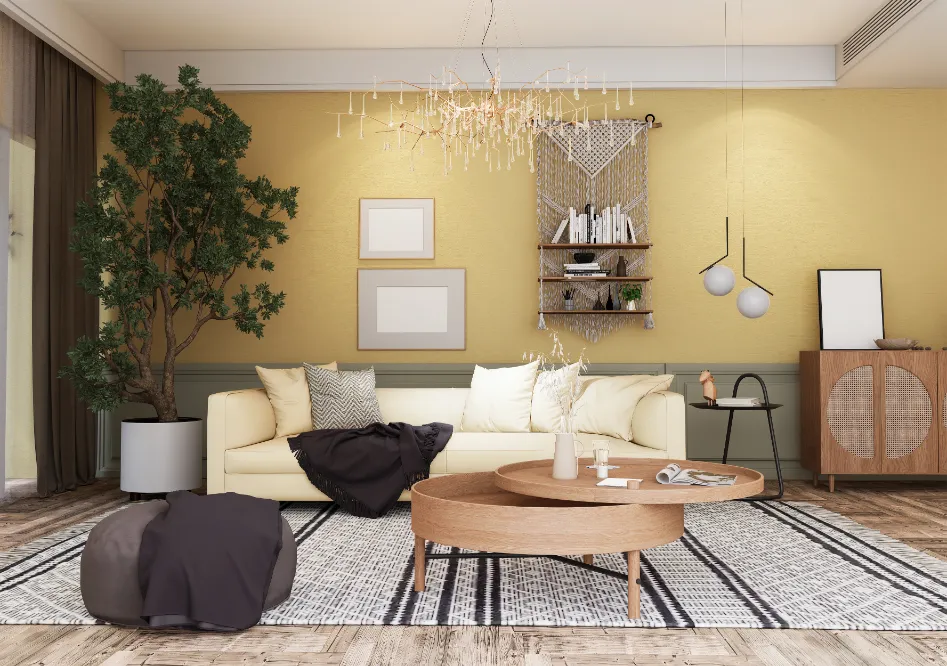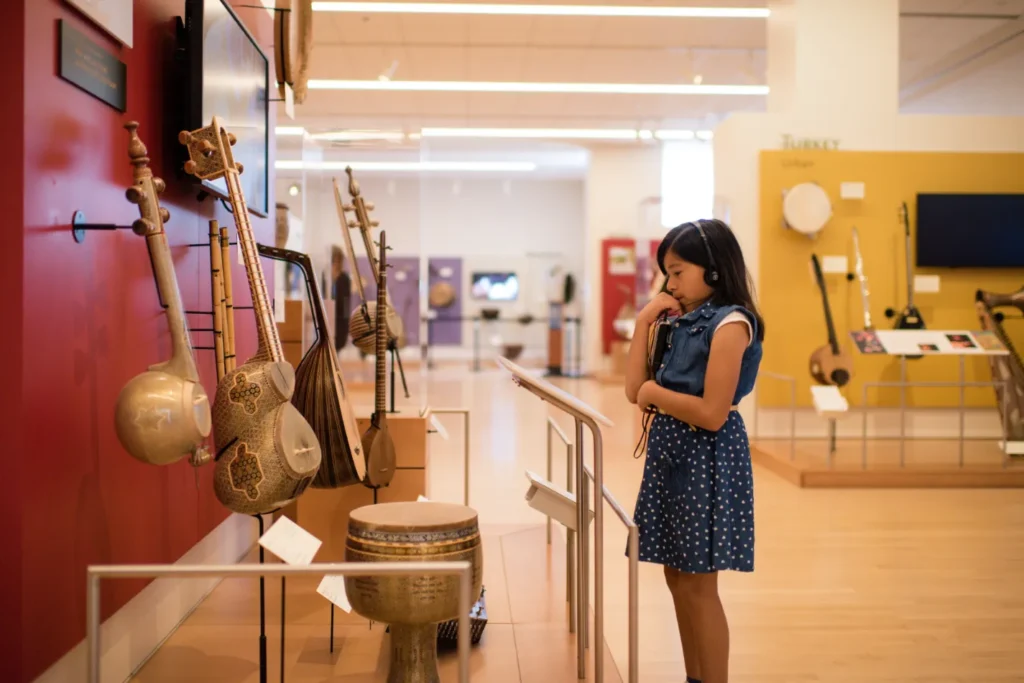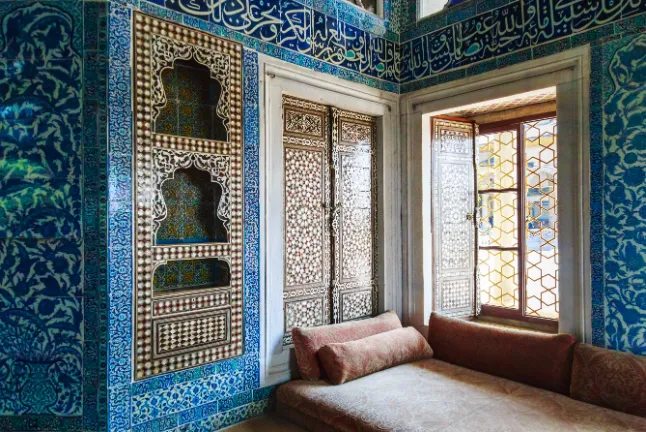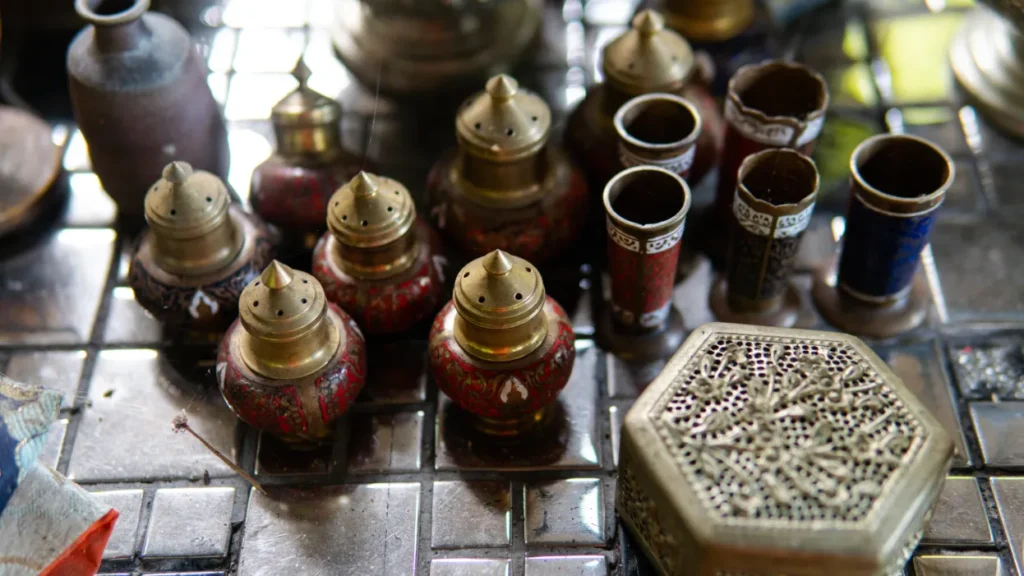Interior Design Heritage Remix: 4 Easy Keys To Modern Fusion
Overview
Explore the art of blending heritage with modernity in interior design. Discover cultural fusion tips for elegant home transformations.
When exploring the realm of interior design, one uncovers an absorbing concept that imparts substance, character, and a deep-seated link to our heritage within our living spaces. This concept, known as cultural fusion, is like a symphony where diverse cultural elements come together to create a harmonious and visually stunning composition.
In the context of interior design, this means that cultural fusion isn’t merely about aesthetics; it’s about crafting home interiors that function seamlessly while honoring our diverse backgrounds and the stories they tell. In today’s world, characterized by unprecedented connectivity and a globalized community, our residences have transcended their traditional roles as mere dwellings.
They now represent the dynamic intersection of our rich diversity, embodying the essence of a global village. Beyond serving as shelter, our homes have become expansive canvases, upon which we artfully paint the portraits of our individual and collective identities. Within this context, the significance of heritage and tradition in modern interior design becomes evident. These elements are not stagnant relics; they are living, evolving components intricately woven into the very fiber of our homes.
Whether you’re a homeowner seeking to transform your living space into a cultural haven or a home design professional looking to master the art of blending heritage with modernity, this blog is your guiding light on this captivating journey. Your home should resonate with the richness of your identity, heritage, and history, all while seamlessly embracing the functionality and style of contemporary design.
In the words of the great Steve Jobs, “Design is not just what it looks like and feels like. Design is how it works.” Cultural fusion in interior design embodies this idea perfectly, as it isn’t simply about creating visually appealing home interiors. It’s about crafting environments that are not only aesthetically pleasing but also functional, reflecting the harmonious blending of tradition and innovation.
In the present era, our world is a complex fabric woven with the threads of various cultures, all of which are embraced and celebrated. The relevance of heritage and tradition in modern interior design is more significant than ever. Our cultural roots are not distant relics; they’re living, breathing components of our daily lives that can bring depth, meaning, and a unique personality to our home interiors.
The Significance Of Cultural Fusion
In a world that’s more interconnected and diverse than ever before, the concept of cultural fusion in interior design carries profound importance.

Exploring The Importance Of Cultural Fusion
In our modern global village, cultures mix and intertwine, creating a rich tapestry of diversity. Cultural fusion acknowledges this interconnectedness and invites us to celebrate it. Here’s why it’s crucial:
Embracing Diversity: Our world is a colorful patchwork of cultures, each contributing its unique customs, stories, and aesthetic elements. Cultural fusion allows us to embrace this diversity and showcase it in our homes. It’s a way to honor and respect the various backgrounds that make up our global community.
Breaking Boundaries: Cultural fusion knows no geographical borders. It enables us to explore and incorporate interior design elements from different parts of the world, making our home interiors a testament to the global heritage we all share.
Personal Expression: It’s a means of self-expression. When we add home décor elements from our own culture or from cultures that connect with us, we’re essentially putting our own special mark on our living spaces. It’s like telling a visual story of who we are.
Adding Depth And Personality To Home Interiors
Cultural fusion isn’t just about creating visually appealing spaces; it goes deeper. It adds character, depth, and a unique personality to our home interiors. Here’s how:
Aesthetic Richness: By merging different cultural elements, we introduce a wide range of colors, textures, patterns, and materials into our interior design palette. This diversity creates visually rich and captivating interiors.
Storytelling: Each cultural element carries its own story and significance. When we integrate these into our home, we’re essentially narrating a tale of our heritage, our experiences, and our passions. It gives our spaces a narrative quality that resonates with anyone who enters.
Conversations Starter: Cultural fusion sparks conversations and connections. When guests see unique home décor elements from various cultures, they’re often curious and eager to learn about the stories behind them. It can lead to engaging discussions and deeper connections with others.
The Role Of Cultural Heritage In Meaningful Home Designs

Cultural heritage is a treasure trove of inspiration for interior design. It holds the key to creating designs that are not only unique but also deeply meaningful.
Source of Inspiration: Our cultural heritage provides an abundant source of inspiration. Ancient artworks, handcrafted items, fabrics, and architectural features from the past can be adjusted to fit modern interior design, forming a fusion that stands the test of time while still feeling fresh and up-to-date.
Adding Significance: Incorporating cultural heritage elements infuses your space with significance. For instance, a handmade rug from your ancestral culture doesn’t just add beauty; it brings with it the skill and craftsmanship of generations. It’s a piece of living history.
Preserving Traditions: Cultural fusion can be a means of preserving and celebrating traditions. By integrating traditional elements into modern design, we ensure that these cultural practices continue to thrive and evolve.
In Practice: Adding Depth With Cultural Fusion
Let’s consider an example. Imagine a living room designed with a blend of Japanese and Scandinavian elements. The straightforward and practical Scandinavian design, when blended with the grace and peacefulness of Japanese style, results in a space that’s not only lovely to look at but also incredibly peaceful and balanced.
In this room, you might find a modern Scandinavian sofa paired with a low Japanese coffee table. The color palette could be a fusion of neutral Scandinavian tones and the soft, nature-inspired colors of Japanese design. Textiles, like curtains and cushions, might feature Japanese patterns, adding an extra layer of cultural depth. The result is a space that’s more than just a living room; it’s a cultural experience.
Finding Inspiration From Different Cultures

Cultural fusion in interior design is a captivating journey that begins with finding inspiration from various cultures. It’s not just about mixing and matching; it’s about understanding the essence of different cultures and incorporating them thoughtfully into your home interior.
The Importance Of Research In Cultural Design
Before you start redécorating your home interior, it’s essential to do your homework. The research lays the foundation for a successful cultural fusion. Here’s why it’s crucial:
Understanding Cultural Significance: Each culture has unique home design elements with cultural significance. For example, in Chinese culture, the color red symbolizes luck and happiness. Knowing these details helps you make informed choices when integrating cultural elements.
Avoiding Misappropriation: Research also helps you avoid cultural appropriation. By understanding the history and meaning behind a design element, you can use it respectfully, avoiding any unintentional offense.
Creating a Cohesive Design: Research ensures that the different cultural elements you choose work together harmoniously. It helps you develop a vision for your interior design and make informed decisions.
Tips On Finding Inspiration From Various Cultures

Visit Museums and Art Galleries: Museums and art galleries are treasure troves of inspiration. You can explore artifacts, artworks, and historical pieces from different cultures. Pay attention to details, colors, patterns, and materials.
Travel and Experience Cultures: If you have the opportunity, travel to different parts of the world. Immersing yourself in different cultures provides a firsthand understanding of their aesthetics. Visit local markets, historical sites, and traditional events.
Read Books and Magazines: Books and magazines about interior design, home décor, and cultural history are valuable resources. They often feature examples of homes that successfully incorporate cultural elements within their interior design.
Online Resources: The internet is a vast source of inspiration. Follow interior design blogs, social media accounts, and websites that focus on cultural fusion within your home design.
Pinterest, Instagram, Twinn, and Houzz can be particularly useful platforms.
Consult with Experts: If you’re unsure about your design choices, consider consulting with interior designers who specialize in cultural fusion. They can provide expert guidance and recommendations.
Examples Of Culturally Inspired Design Elements

Moroccan Tiles: Moroccan tiles are known for their intricate geometric patterns. Incorporating these tiles in your kitchen backsplash or bathroom can add a touch of exotic elegance to your home interior.
Indian Textiles: Indian textiles, such as vibrant saris and intricately embroidered fabrics, can be transformed into stunning home décor items like cushion covers, curtains, or table runners. These textiles infuse a burst of color and culture into your living space.
African Art: African art, with its bold sculptures and masks, can serve as striking décorative pieces. These art items not only add visual appeal but also convey the rich cultural heritage of the continent.
Japanese Zen Gardens: Incorporating the principles of Zen gardens, characterized by minimalism and a sense of tranquility, into your outdoor space can create a serene and harmonious atmosphere for relaxation.
Mexican Talavera Pottery: Mexican Talavera pottery is famous for its vibrant hand-painted designs. You can use Talavera pottery for décorative accents, such as vases or tile work, adding a touch of Mexican charm to your home décor.
Significance Of Culturally Inspired Elements
Culturally inspired design elements are not just about aesthetics; they carry stories and meanings that enrich your home interior:
Emotional Connection: These elements can create an emotional connection with your heritage or a culture that resonates with you.
Conversation Starters: They become excellent conversation starters, allowing you to share the stories and significance behind your home décor with guests.
Unique Personal Touch: Culturally inspired elements make your home unique and truly reflective of your identity and experiences.
Incorporating elements from different cultures into your interior design is a beautiful way to celebrate the diversity of our world. It allows you to create a space that is not only visually appealing but also culturally rich and meaningful. So, let your research guide you, and let your inspiration be a bridge to the cultures that inspire you the most.
Color, Textures, And Patterns: Weaving The Threads Of Cultural Fusion
When it comes to cultural fusion in interior design, colors, textures, and patterns are the threads that weave a tapestry of beauty and harmony. Let’s explore their pivotal role, and how you can master the art of selecting, combining, and balancing these elements effectively in your home décor.

The Role Of Colors, Textures, And Patterns
Colors, textures, and patterns are the cornerstone of any interior design, but in cultural fusion, they take on an even more significant role. Here’s why:
Colors: Colors often hold cultural significance. For instance, in Chinese culture, red represents luck, while in Scandinavian design, you find a lot of whites and cool blues. When you choose colors from different cultures, you’re infusing your home interior with diverse emotions and meaning.
Textures: Different textures evoke unique sensations. Rough textures may be reminiscent of the earthy feel of African culture, while the smoothness of Japanese design provides a sense of serenity. Combining these textures adds depth and tactile appeal to your space.
Patterns: Patterns tell stories. Geometric patterns like those in Moroccan design can add a touch of exoticism, while paisley patterns may bring an Indian flavor. Patterns serve as a visual language, conveying the history and symbolism of a culture.
Selecting And Combining Elements Effectively
Start with a Dominant Element: Begin by selecting one dominant cultural element, whether it’s a color, texture, or pattern, that resonates with your vision. This will serve as your starting point.
Gradual Incorporation: To avoid overwhelming your home interior, gradually introduce additional elements that complement your dominant choice. For example, if you start with a bold pattern, choose more muted colors to balance it.
Balance Boldness with Neutrals: If you have a strong, culturally inspired element, such as vibrant colored textiles, balance it with neutral walls and furniture. This allows the culturally inspired home décor elements to shine without being overpowering.
Use Accents: Small accents, like throw pillows, curtains, or area rugs, can be a fantastic way to introduce cultural elements without a major overhaul.
Layering: Layering different textures and patterns adds complexity and depth to your interior design. For example, you can layer a smooth, dark wood table with a textured, vibrant rug for a balanced look.
Achieving Balance And Harmony In Design
Cultural fusion is all about achieving harmony among diverse home décor elements. Here are some tips for creating a well-balanced and harmonious design:
Consistency: Maintain a consistent theme by choosing elements from cultures that complement each other. For instance, Scandinavian and Japanese designs share a minimalist aesthetic that can work well together.
Color Palette: Create a unified interior design color palette that ties together the different home décor elements. You can do this by selecting a dominant color or complementary colors that appear throughout the design.
Proportion: Pay attention to the proportion of each cultural element. Ensure that no single element overpowers the others. Balance is key.
Visual Flow: Ensure that the interior design flows seamlessly, leading the eye from one element to another without abrupt disruptions. This can be achieved through thoughtful furniture placement and layout.
Remember, cultural fusion in interior design is an art, and like any art, it requires experimentation and a keen eye for balance. So, be patient, and allow your space to evolve gradually, reflecting your unique blend of cultures while maintaining harmony and visual appeal.
Balancing Authenticity And Appropriation In Cultural Fusion

Cultural fusion in interior design offers a delightful canvas for creativity, but it comes with an important responsibility – to strike a balance between authenticity and appropriation. Let’s delve into the nuances of this delicate dance.
The Role Of Authenticity In Cultural Fusion
Authenticity is the heartbeat of cultural fusion. It’s about respecting and embracing the richness of diverse cultures. Authenticity respects the traditions, histories, and meanings behind each cultural element. It acknowledges the significance of each choice. It steers clear of cultural stereotypes. It understands that no culture is monolithic and that every culture has layers of diversity. It celebrates the beauty of cultural elements and appreciates them for what they are. It’s a form of paying homage to the culture that inspires you by way of inculcating home décor items within your interior design.
Selecting And Combining Elements Effectively With Respect
Before incorporating any cultural element, take the time to understand its significance. For instance, a Mandala pattern symbolizes the universe and unity in Hindu and Buddhist cultures. Knowing this adds depth to your interior design. Be mindful of your choices.
Select elements that resonate with you personally or are connected to your heritage. This personal connection adds authenticity to your home design. When purchasing cultural elements, consider their source. Supporting artisans and communities from the culture you’re drawing from is a respectful way to embrace authenticity.
Guidance On Achieving Balance And Harmony In Interior Design
While cultural fusion encourages incorporating different elements, moderation is key. Avoid overcrowding your home interior with too many elements. Select a few key pieces that make a statement. Ensure that the elements from different cultures work cohesively together.
Create a unified design that respects the visual harmony of your space. Engage in dialogue with experts, members of the culture you’re drawing from, or even fellow designers who specialize in cultural fusion. They can provide insights and guidance.
Respect And Responsibility
Balancing authenticity and appropriation in cultural fusion is a task that requires sensitivity and responsibility. Every element in your interior design should be chosen with respect for the culture it represents. This approach not only leads to beautiful home interiors but also promotes cultural understanding and appreciation.
Conclusion

This journey entails striking a balance between respecting other cultures and appreciating their aesthetic appeal. It involves conducting research, making thoughtful choices, and nurturing a deep admiration for the cultures that inspire us. When we blend elements from different cultures into our living spaces, it’s comparable to initiating a cross-cultural conversation that breaks free from limitations. This process fosters connections with others and enhances our understanding of diverse ways of life.
Cultural fusion in interior design pays homage to our interconnected global community. It’s an artistic endeavor that enhances the beauty of our lives and homes. So, let your design decisions be a way to honor the cultures that resonate with you. May your living spaces become a testament to unity, diversity, and the marvelous amalgamation of various cultures.
For a home that beautifully merges heritage and modernity, The White Frame is your ultimate partner. With our extensive experience in cultural fusion, your space will reflect a perfect blend of tradition and contemporary aesthetics.
Explore some of our work Here.









